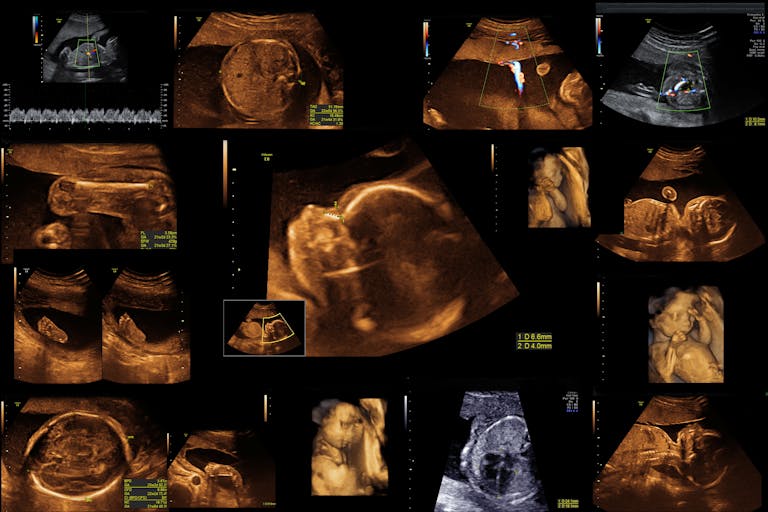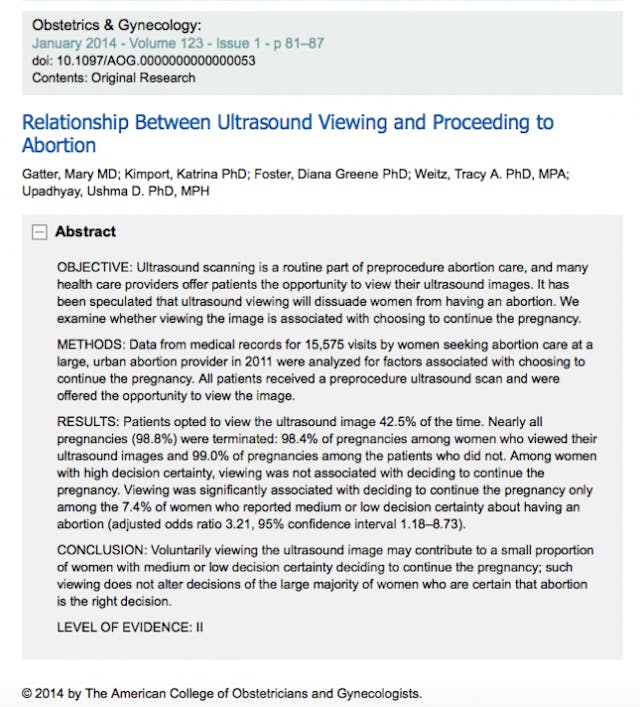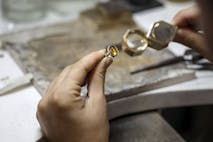
A growing number of Americans call themselves ‘pro-choice’ – but what’s really behind it?
Nancy Flanders
·
Planned Parenthood’s ultrasound problem: Good for harvesting organs, bad for business
Dr. Mary Gatter, President of Planned Parenthood’s Medical Directors’ Council, was seen in a second video released Tuesday by the Center for Medical Progress, haggling over fetal organ procurement compensation.
While the haggling was by far the most damning part of the conversation, Dr. Gatter also mentioned off-hand her involvement with political action and research on various issues in the abortion industry – one of them being, in her words, an ultrasound study yielding “nuanced” results. Despite the fact that multiple studies prior to this one have found that close to 80 percent of women change their minds and choose to give birth after seeing an ultrasound, Gatter’s study showed just the opposite.
The question is… why?
From the transcript:
Gatter: I had worked with some researchers out of UCSF, Tracy’s (inaudible) who moved to Omaha to be part of the Buffett foundation. So, the doctors and I looked at if it made a difference in abortion if you were forced to have an ultra sound or not. As it happens we have them in our system but when you record that patients decision, do you want to see it or not, because it California it’s optional. So, now they give a court ordered decision to see it, and we have a separate thing asking how sure are you about your decision. Very sure, not sure, you know, So we looked at thirty thousand patients to see if looking at the ultrasound made a difference.
Guess what? For most patients, it does not. Sixty percent of patients did not want to look at it, forty percent did. They both proceeded to have the abortion the exact same way, with the exception of women who were unsure about their decision. If you were uncertain and you saw the ultrasound, you are one or two percentage points less likely to have the procedure. So, it’s kind of a nuance, and our enemies don’t do nuance as you know, so we published that last year.
The study, entitled, “Relationship Between Ultrasound Viewing and Proceeding to Abortion,” was published in the January 2014 issue of the ACOG’s Obstetrics and Gynecology. While a subscription is required to read the study in its entirety, the abstract itself (pictured below) raises some questions and points to consider.

1) “Ultrasound scanning is a routine part of pre-procedure abortion care.”

These are the first words of the study’s abstract, shown above. Recall with me the outrage expressed by abortion activists a few years back when certain states were just beginning to propose mandatory ultrasound laws.
NOW’s Terry O’Neill (pictured) called it “state-sponsored rape” and said “ultrasounds are rarely medically necessary prior to an abortion, (and) these laws exist to demean the woman and make the procedure more expensive to boot.” Informed consent laws are always fought tooth and nail by Planned Parenthood and the abortion industry. Yet here we have Planned Parenthood medical director Mary Gatter (et al.), in a printed, peer-reviewed publication, stating that women already must undergo ultrasound prior to abortion; that it is “routine.”
If a woman is going to have a “routine” ultrasound prior to her abortion anyway, what’s so horrible about allowing her to see it?
2) “All patients received a pre-procedure ultrasound scan and were offered the opportunity to view the image.”
When past studies found that up to 80 percent of women are swayed toward life after viewing ultrasounds of their preborn children, were they researching something altogether different than what Gatter’s study portrays?
Some have stated that the abortion industry’s idea of “viewing the ultrasound” is stapling a sonogram photo to a chart – sometimes even covering the photo with an index card.
In other words, there is a vast difference between viewing the ultrasound of a preborn child in real time and viewing the simple, static image of that ultrasound on printed paper.
When I was 11 weeks pregnant with my first child, I required an ultrasound to investigate some unexplained bleeding. At the time, I was well aware of fetal development, having worked at a pregnancy resource center – yet, seeing my daughter on the monitor, kicking, turning, and opening and closing her mouth before I could even feel her movements really brought home to me the reality of that little life. A static piece of paper (with or without an index card stapled on top) could never have had the same effect.
3) “Patients opted to view the ultrasound image 42.5% of the time.”
Therefore, nearly 58 percent of women in this study did not wish to see an ultrasound image. This seems like a very high number of women wishing to remain utterly uninformed. What could be the motivation behind this?
Can we trust that those involved with this study, like Gatter, whose organization opposes ultrasound and other informed consent for women undergoing abortions, did not attempt to sway results in their favor? Can we trust that the way the ultrasound viewing option was presented to patients was not actually seeking to discourage them through the use of certain rhetoric or scare tactics?
Our Bodies Our Selves also noted some interesting points in the study, repeating researchers’ concern that laws requiring patients to view their ultrasounds may produce different results – and therefore, the abortion industry strongly discourages them.

Tracy Weitz of the Buffett Foundation (pictured left), one of the study’s authors, is reported to have said that “conversations about mandatory ultrasound… should be focused on how these laws drive up costs, make providing abortion care more difficult, do not improve health outcomes, and eliminate patient autonomy.”
“Driv[ing] up costs?” When ultrasounds are already “routine”? I doubt that. “Mak[ing] providing abortion care more difficult”? Well, if you mean it might be difficult to keep business, perhaps. “Do not improve health outcomes”? For whom? “Eliminate patient autonomy”? Every procedure requires informed consent, and being fully informed actually increases a patient’s ability to make an autonomous decision.
But sure, let’s keep talking about those things while tiptoeing around the fact that ultrasound opens a window into the womb, showing the very real human being that an abortion kills. That’s why they’re really against it being mandated, and we all know it.
4) “Viewing was significantly associated with deciding to continue the pregnancy only among the 7.4% of women who reported medium or low decision certainty about having an abortion.”
Let’s see… if this is true, that means that out of 15,575 abortion visits, 1,152 women were undecided about having an abortion. That’s potentially 1,152 lives spared. Let’s pretend that those would have all been first-trimester abortions (though, from the Our Bodies Our Selves article, we know that they weren’t), and let’s price those abortions at about $350 each (which is on the low end). That means that by showing just the women with “medium or low decision certainty” their ultrasound image, the abortion clinic could potentially lose up to $403,200 in annual clinic income.
You tell me: do you really believe, then, that Planned Parenthood has an interest in showing women ultrasound images of their preborn children? No, but they seem to have an interest in using ultrasound technology to carefully obtain undamaged, select organs and tissues of those same preborn children during an abortion.

Republican presidential hopeful Carly Fiorina (pictured right) was right to point out “the cruelty of denying women over and over again ultrasounds so that they can see the life they carry within them and yet using that same technology to make sure that organs are preserved so that they can be presumably sold to save others.”
Planned Parenthood, we now know, does exactly that.
Neither they, nor their representatives, should ever again be viewed as objective. When the researchers performing a study stand to personally benefit from obtaining certain results, question those results. Dr. Mary “Lamborghini” Gatter may be proud of her politically motivated work, but to have it published in a medical journal under the guise of objectivity is both a sham and a shame.
Live Action News is pro-life news and commentary from a pro-life perspective.
Contact editor@liveaction.org for questions, corrections, or if you are seeking permission to reprint any Live Action News content.
Guest Articles: To submit a guest article to Live Action News, email editor@liveaction.org with an attached Word document of 800-1000 words. Please also attach any photos relevant to your submission if applicable. If your submission is accepted for publication, you will be notified within three weeks. Guest articles are not compensated (see our Open License Agreement). Thank you for your interest in Live Action News!

Nancy Flanders
·
Analysis
Cassy Cooke
·
Analysis
Cassy Cooke
·
Pop Culture
Cassy Cooke
·
Issues
Cassy Cooke
·
Abortion Pill
Nancy Flanders
·
Human Interest
Kelli Keane
·
Activism
Kelli Keane
·
Politics
Kelli Keane
·
Human Interest
Kelli Keane
·
Abortion Pill
Kelli Keane
·